In this edition of Sliced, the 3D Printing Industry news digest, we cover the latest business developments and partnerships in the 3D printing sector.
Today’s edition includes 3D printing partnerships, a new post-processing system for metal components, a plethora of new 3D printing materials, the world’s largest 3D printed model of London, and custom 3D printed ski goggles.
Read on for the most recent updates from Photocentric, TronHoo, Sartomer, Solukon, Solvay, alphacam, PostProcess Technologies, ZIGGZAGG, Smith Optics, XJet and more.
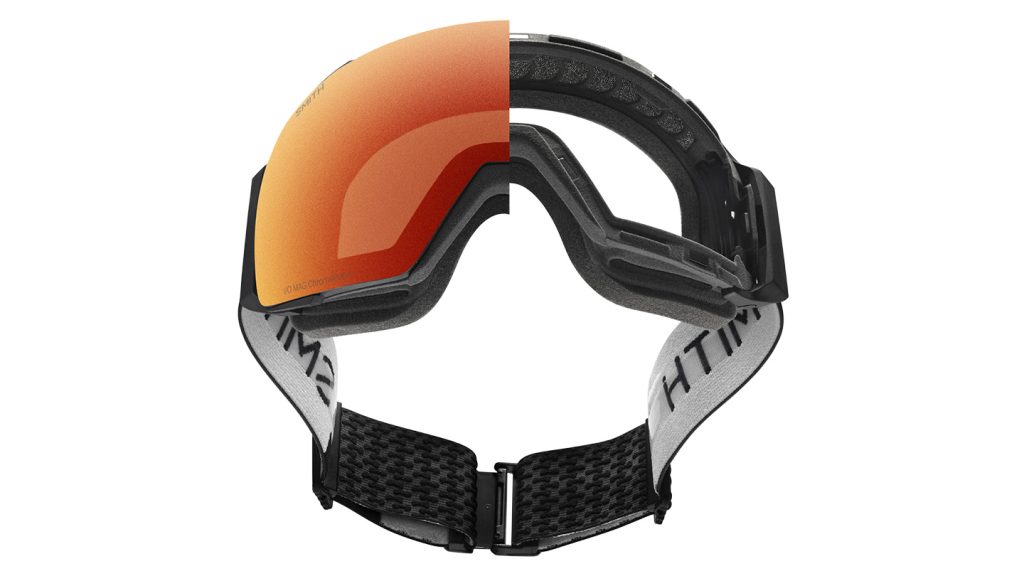
New partnerships in additive manufacturing
Kicking off with the latest business deals in additive manufacturing, 3D printer OEM XJet recently signed two new European distribution agreements to expand the reach of its metal and ceramic 3D printing technology. Tri-Tech 3D will supply the UK and Irish markets while Emetrês is set to supply the Portuguese manufacturing sector. As well as reselling XJet’s 3D printers, the firms will also work to provide XJet’s materials, local installation services, training, and customer support.
Dror Danai, CBO of XJet, said, “Tri-Tech 3D has a wealth of knowledge and experience in providing the UK market with leading additive manufacturing technologies. In the same vein, Emetrês has established itself with passionate dedication to the customer experience. XJet is all about the details, Emetrês and Tri-Tech match our philosophy and so make ideal partners for distributing our Carmel AM systems in their respective regions.”
Elsewhere, chemicals company Solvay recently partnered with composite 3D printing specialist 9T Labs to help enable carbon fiber 3D printing for high-performance applications. Specifically, Solvay will focus on developing new CF-PEEK, CF-PA, and CF-PPS materials for use with 9T Labs 3D printing technology, providing the latter’s customer base with greater materials choice when it comes to applications in aerospace, medical, automotive and more.
Marco Apostolo, director of technology at Solvay, adds, “With 9T Labs’ innovative process and equipment and Solvay’s high-performance thermoplastic materials, we are well-positioned to address problems that have long plagued manufacturers in many industries trying to use advanced composites — namely high incremental costs, high scrap, and problems achieving repeatability and traceability at high volumes.”
PostProcess Technologies, a leading provider of automated post-processing systems for the 3D printing industry, recently signed a distribution agreement with technology supplier alphacam. As part of the deal, alphacam will provide German-speaking markets with PostProcess’ automated powder and support removal systems, as well as using the machines in its own in-house 3D printing services.
Shapeways, an on-demand additive manufacturing platform, has strengthened its partnership with 3D printer OEM Desktop Metal to improve access to the latter’s industrial 3D printing capabilities. Moving forward, Shapeways will expand its Desktop Metal system capacity at its ISO-9001 manufacturing facilities in both Long Island City, New York and Eindhoven, Netherlands. Desktop Metal will also begin offering its customers Shapeways’ purpose-built software platform, Otto, for fully digitized, end-to-end 3D printing workflows.
“We’re extremely pleased to progress our partnership with Shapeways and propel the additive manufacturing industry forward,” said Ric Fulop, Founder and CEO of Desktop Metal. “For customers starting their digital manufacturing journeys who may not be ready to purchase equipment of their own, Shapeways will offer instant access to Desktop Metal’s comprehensive portfolio of high-speed, AM 2.0 printing platforms and rich materials library.”
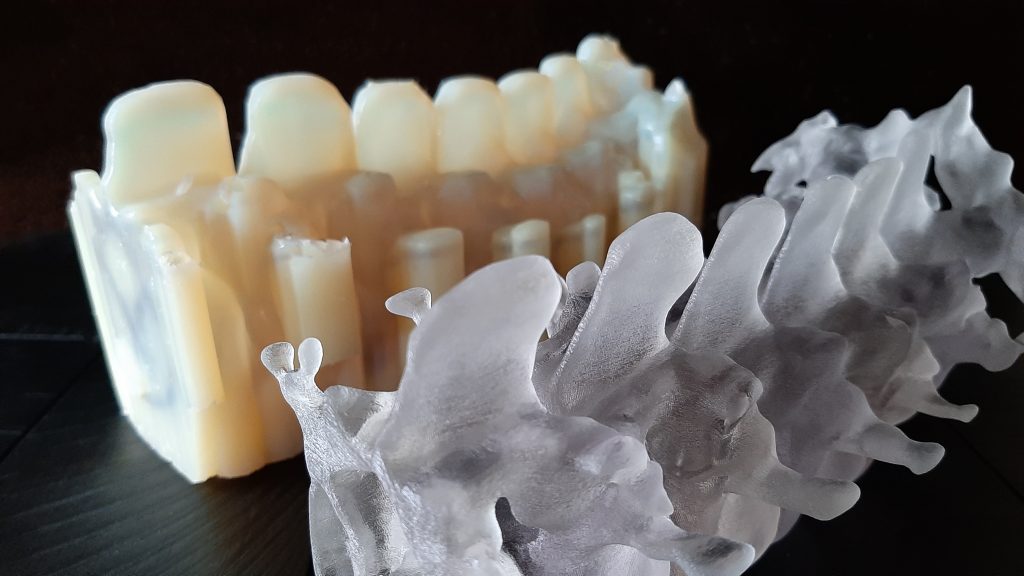
ExOne welcomes new wave of 3D printer sales
Binder jet 3D printer manufacturer ExOne has announced a new wave of metal 3D printer sales. The Pressburg Mint of Slovakia has purchased two of the first five X1 160Pro systems, while tech company Schunk Group has invested in an X1 25Pro.
The Pressburg Mint’s Printy division will use its X1 160Pro printers to 3D print numismatic and investment coins, as well as other goods for customers as part of its new 3D printing service. One of these machines will be dedicated to 3D printing silver 925, while the other will run print jobs using 316L stainless steel and other metals.
On the other hand, Schunk Group will install its newly acquired X1 25Pro at the Schunk Sinter Metals location in Thale, Germany. The machine will be utilized for the series production of metal parts for automotive, aerospace, and medical customers throughout Europe.
Tobias Franz Heusel, Global Account Manager at Schunk, said, “We believe 3D printing is the technology of the future, and we will use our binder jetting system to develop technologies and parts that go beyond what we can provide with traditional sintered metal components.”

3D printing software news with 3YOURMIND and VoxelDance
Over in Berlin, software developer 3YOURMIND has developed a custom workflow automation software for 3D printing service bureau ZIGGZAGG. ZIGGZAGG currently has the second-largest HP 3D printer farm in Europe, which can produce as much as 200,000 polymer parts a year.
The firm was seeking a way to automate its large-scale processes, reducing manufacturing errors while freeing up more time for its customers. 3YOURMIND helped implement its proprietary Agile ERP and MES platforms, as well as two of Ziggzagg’s previously used software, to deliver a fully customized end-to-end workflow management product. For ZIGGZAGG, the result was a 75% reduction in manual work time and up to 150% higher 3D printer utilization times, saving hundreds of thousands of Euros a year.
In the dental 3D printing space, digital orthodontics firm Guangzhou Riton has been leveraging print preparation software developed by VoxelDance to 3D print dental parts for its customers in China. Working closely together, the firms have reportedly managed to improve Riton’s data preparation efficiency by 30%, optimizing the 3D printing workflow for products such as crowns, bridges, and dental stents.
“VoxelDance software is a functional, cost-effective, and stable data preparation software, which is very suitable for dental digital solutions,” said Guo Hua, Technical Director of Riton.
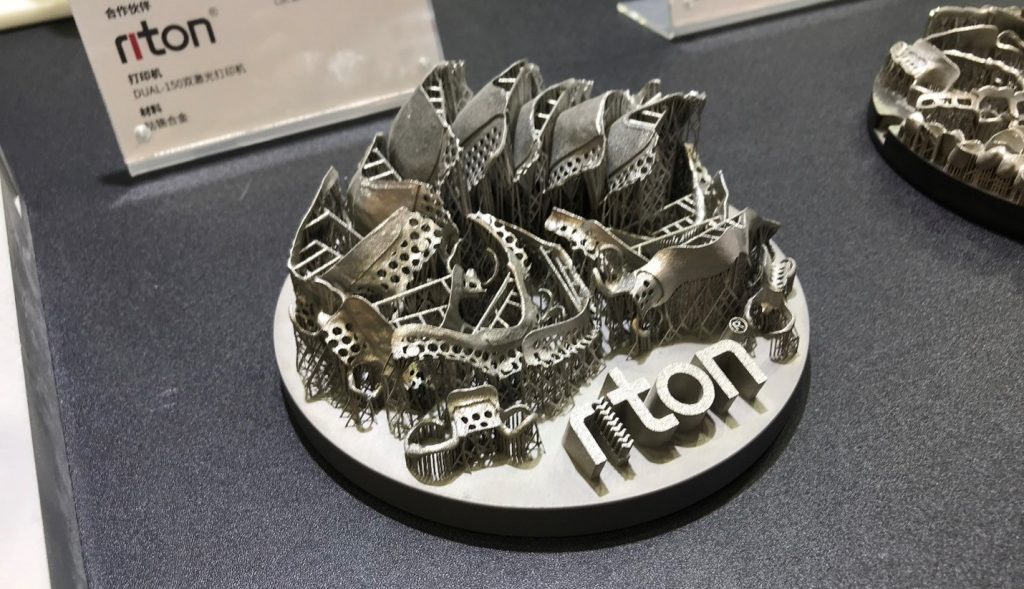
New materials in additive manufacturing
China-based desktop 3D printer manufacturer TronHoo has announced the launch of its new thermochromic PLA filament. Mixed with leuco dye additives, the material is capable of changing colors based on its temperature, and is primarily designed for consumer goods, toys, decorations, and artwork. According to TronHoo, its latest material also offers higher impact resistance than conventional PLA filament.
Elsewhere, 3D printing service bureau Weerg has announced the launch of its new PEEK 3D printing filament. Known for its excellent set of mechanical properties, Weerg’s PEEK filament is designed to offer performance on par with aluminum, making the material suitable for metal replacement components. As well as being lightweight, the thermoplastic features an ultimate tensile strength of 89 MPa, flame retardancy characteristics, and a resistance to oils, greases, and hydrocarbons.
“In the last year, the 3D printing sector has grown exponentially, which demonstrates the need to design materials that are more and more efficient”, explains Matteo Rigamonti, founder of Weerg. “For this reason, we invest significant resources in the development of materials with special characteristics that can be used for specific industrial applications, constantly expanding our offer.”
STEELTEK, a Poland-based materials developer, has launched its new Green-Spool range of eco-friendly 3D printing filaments. The product line comprises six filament types, including a composite of recycled PP and wood fibers, a composite of recycled PP and chalk, a PET offering made of recycled beverage bottles, and even a recycled PC spool. In line with its environmentally-friendly goals, the company has also optimized the design of the spools to reduce material use by up to 20% when compared to competitors.
Over in Israel, Massivit 3D, a manufacturer of large-format 3D printing systems, has launched two new materials for use with its 3D printers. Dimengel 20-FR (DIM 20-FR) is a flame-retardant offering designed to enable flammability-related safety applications. The gel complies with the highest standard for flame-retardant materials – the UL94-V0. On the other hand, Dimengel 300 (DIM 300) is the firm’s new high translucency material intended for design verification, interior design, architecture, scenic displays, and advertising applications.
“Dimengel lies at the heart of Massivit 3D’s patented Gel Dispensing Printing technology,” says Erez Zimerman, CEO at Massivit 3D. “We are continuously developing new, innovative materials to broaden the scope of applications available to our customers, whether for the purpose of manufacturing railway spare parts, automotive aftermarket parts, or amusement park displays.”
VOID Technologies, a materials firm based in the US, recently launched its new VO3D PLA 3D printing filament. The material reportedly offers four times the toughness of standard PLA and is aimed at both professionals and hobbyists seeking parts with high impact performance. The material was created using the company’s own patented VO+ nanotechnology, which embeds nano-scale additives for improved mechanical performance.
George Melton, Commercial Manager at VOID, said, “VO3D has proven very popular with hobbyists who want greater performance and toughness in their 3D prints. With this new product, we bridge the gap between PLA and ABS. We have had especially good feedback from drone and remote-control vehicle users who require a material with excellent impact performance.”
In Switzerland, materials company Suprem has debuted its new Filaprem filaments range for FDM 3D printing. The new brand consists entirely of carbon fiber-reinforced composites designed for use in metal replacement applications, meaning they offer mechanical properties comparable to those of steel, titanium, and aluminum alloys.
Targeting the resin 3D printing market, Sartomer, a business line of chemical company Arkema, has launched a new range of ultra-low loss dielectric resins. Designed specifically for electronics and radio frequency applications, the UV-curable materials offer a dielectric constant of less than 3.0 and a dissipation factor of more than 0.0032. According to Sartomer, its new offering is best used to 3D print antenna elements, radomes, lenses, copper-clad laminates, B-staging, and server storage.
“As 3D printing is transforming electronics applications to meet demands of improved performance, functionality, and speed to market, we are continuously working to develop materials technologies that optimize electrical performance as well as thermal and mechanical,” said Sumeet Jain, Senior Director of 3D Printing Worldwide at Arkema. “To meet the growing electronic market’s specific needs, we have invested in a dedicated team of electronics specialists.”
Finally, chemical firm Henkel has launched its latest 3D printing resin for its Open Materials Platform. The high-performance material, Loctite 3D IND408, is designed to enable the printing of isotropic parts with low moisture absorption. Featuring a smooth, glossy final surface and an excellent thermal performance at temperatures above 100°C, the resin is reportedly ideal for design visualization applications.
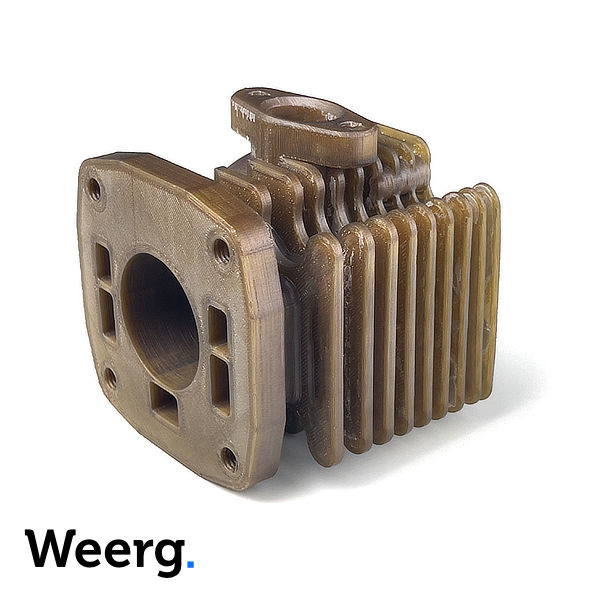
New post-processing systems and 3D printer add-ons by Solukon and BCN3D
Solukon, a manufacturer of automated post-processing systems, recently announced its latest metal depowdering system, the SFM-AT350. Set to debut at Formnext 2021, the machine is based on Solukon’s Smart Powder Recuperation (SPR) technology. It features a horizontal axis capable of swiveling up to 250 degrees and can be used to process metal 3D printed parts up to 60kg in mass and 420mm in height.
Andreas Hartmann, CEO and CTO of Solukon, said, “The SFM-AT350 is the new standard for the depowdering of medium-sized components. All features of the system are state of the art. Medium-sized components can now be automatically freed from powder even faster and easier. The fact that complex rotation patterns can be programmed effortlessly is a great advantage for depowdering even the most challenging geometries.”
Elsewhere, in Barcelona, 3D printer manufacturer BCN3D has launched a new ‘Metal Pack’ add-on for use with the firm’s Epsilon 3D printer range. The hardware upgrade comes in the form of a new hotend, and enables users to 3D print BASF Forward AM’s Ultrafuse Metal filaments. This enables users to unlock previously-impossible high-performance applications in sectors such as automotive, aerospace, and manufacturing.
Firat Hizal, Head of Metal Systems Business Group at BASF 3D Printing Solutions, adds, “Ultrafuse® Metal Filaments portfolio has been developed based on BASF´s decades of know-how coming from the Metal Injection Moulding (MIM) industry. Filaments are designed for ultimate ease of handling and can be used on any open-source Fused Filament Fabrication (FFF) printer. We are very happy that both Ultrafuse® 316L and 17-4 PH are validated by BCN3D and BCN3D decided to enable its userbase by introducing this bundle.”
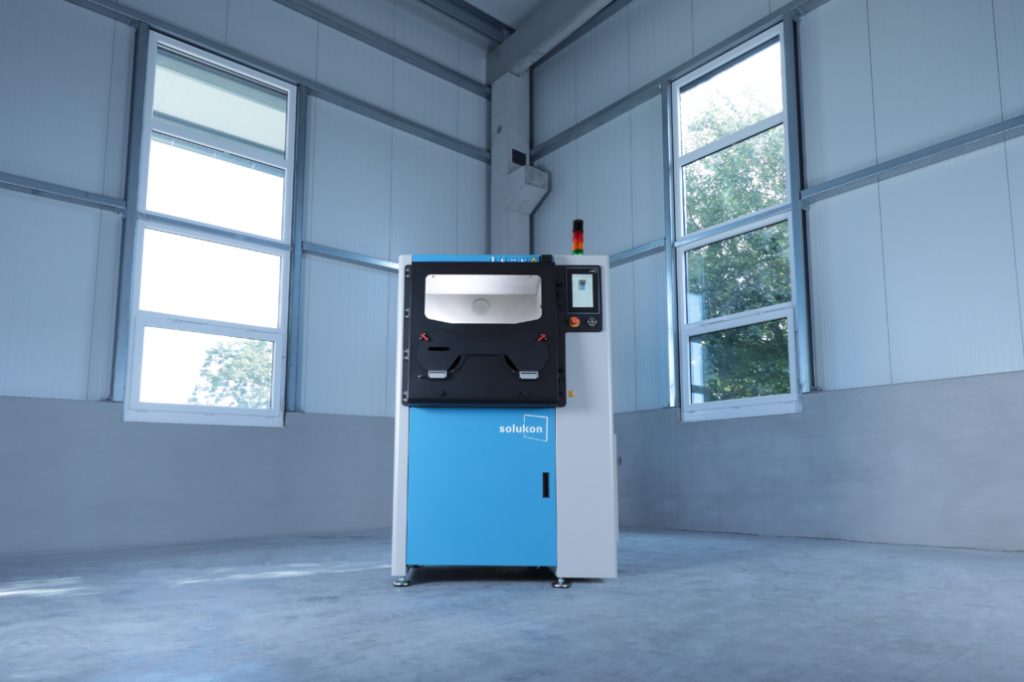
New 3D printers by fabWeaver, Photocentric, and Smart3D
Up-and-coming 3D printer OEM fabWeaver recently debuted its new type A530 3D printer. Backed by Sindoh, the FFF workstation is designed primarily for the functional prototyping of strong and durable parts, and will be showcased at Formnext 2021. Priced at around $10,000, the system features a dual-nozzle setup, a build volume measuring 310 x 310 x 310mm, and print speeds of up to 200mm/s.
“There’s a sweet spot in the industrial 3D printing market that has been looking for faster, more durable 3D printed parts that teams can create more affordably,” said Jesus Fernandez, CEO of 3D printing service bureau Leon 3D. “The fabWeaver type A530 is an exciting prototyping option that can answer that need, and help a wide variety of organizations to improve lead times with minimal cost.”
LCD 3D printer manufacturer Photocentric will also be showing its latest innovations off at Formnext 2021, including its enhanced LC Magna 3D printer, LC Opus 3D printer, Photocentric Additive software, and a new portfolio of materials. The Magna now offers a quad processor, optimized platform coating, and upgraded control system. The Opus, on the other hand, is Photocentric’s fastest 3D printer to date, packing a cure speed of 2 seconds per layer at 50µm layer thicknesses.
“We’re excited to be able to demonstrate how our solutions can deliver speed, volume and cost savings to help manufacturers to beat their competitors,” says Sally Tipping, sales director at Photocentric. “We continue to deliver innovation to our partners thanks to our sustained investment in research and development – be that with our LCD 3D printers, software or materials – and it is a pleasure to bring these to a global audience.”
Finally, 3D printer OEM Smart3D will be demonstrating its Macro Production Module at Formnext 2021. The industrial-grade dual-extrusion FFF system contains four individual print chambers measuring 350 x 350 x 400mm each, as well as a maximum nozzle temperature of 500ºC. Machine component manufacturer RGF has already used the Macro Production Module to 3D print parts that require flame-retardancy and high strength, using materials such as PEEK and carbon fiber composites.

AMCM and copper 3D printing
EOS’ Additive Manufacturing Customized Machines (AMCM), a developer of 3D printing technology, has announced a number of recent projects demonstrating the firm’s copper 3D printing capabilities. Working with maritime company thyssenkrupp, AMCM 3D printed a custom inductor design using a 1 kW infrared fiber laser and pure copper powder. The OEM’s 3D printing technology was also used to manufacture a copper alloy combustion chamber for Launcher, AMCM’s first customer in the space industry.
A 3D printed model of London
Over in the art world, AccuCities and Hobs 3D have created the world’s largest 3D printed model of London. The scale model is over 2.5 meters in length and covers the 40 square kilometers Hyde Park and Canary Wharf. Comprising several sets of 10cm x 10cm tiles, the model will be made available to architects, urban planners, and other customers looking to hire an affordable physical model of the city.
“Creating a 3D printed London model in modular tiles means that we don’t have to 3D print the entire city model for each project, only the tiles affected by change,” says Michal Konicek, AccuCities Director. “Add to that the option to hire the rest of the model instead of buying it and suddenly the option to use a 3D printed model becomes affordable even for small and medium-size projects.”
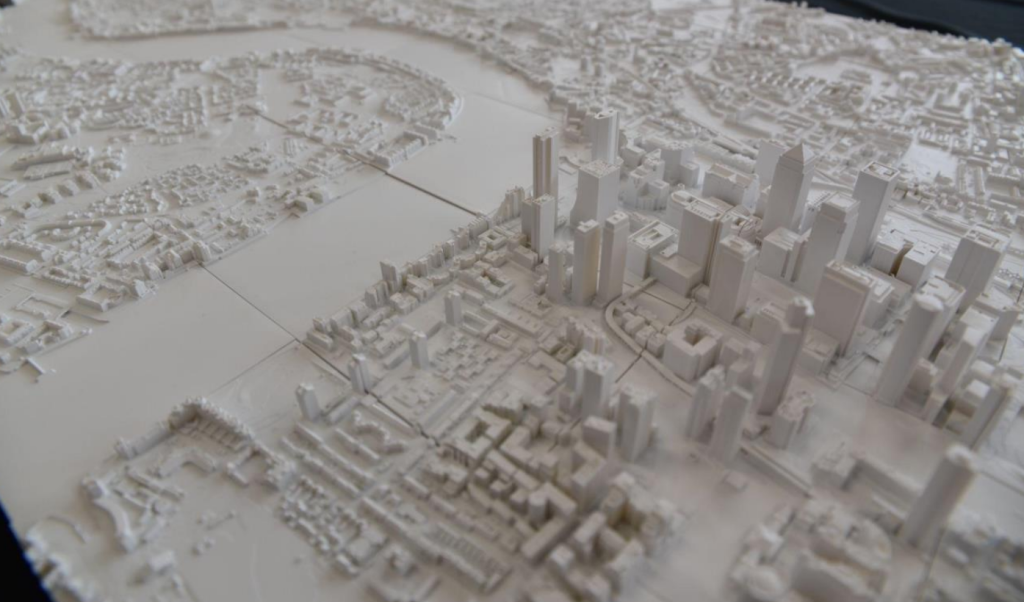
Custom 3D printed ski goggles by Smith Optics
Finally, eyewear manufacturer Smith Optics has launched its own set of custom 3D printed ski goggles. Produced using the firm’s ‘Imprint 3D Technology’, the goggles feature a made-to-fit 3D printed frame based on a precision scan of the customer’s facial contours.
Priced at a hefty $450, the printed spectacles are designed to eliminate light leaks, air gaps, and hot spots. They also reportedly provide the widest possible field of vision and are comfortable enough to wear all day. Customers can 3D scan their faces using the Smith smartphone app and the goggles will be delivered in around two weeks.
Subscribe to the 3D Printing Industry newsletter for the latest news in additive manufacturing. You can also stay connected by following us on Twitter, liking us on Facebook, and tuning into the 3D Printing Industry YouTube Channel.
Looking for a career in additive manufacturing? Visit 3D Printing Jobs for a selection of roles in the industry.
Featured image shows Sliced logo on the world’s largest 3D printed model of London. Photo via AccuCities.


